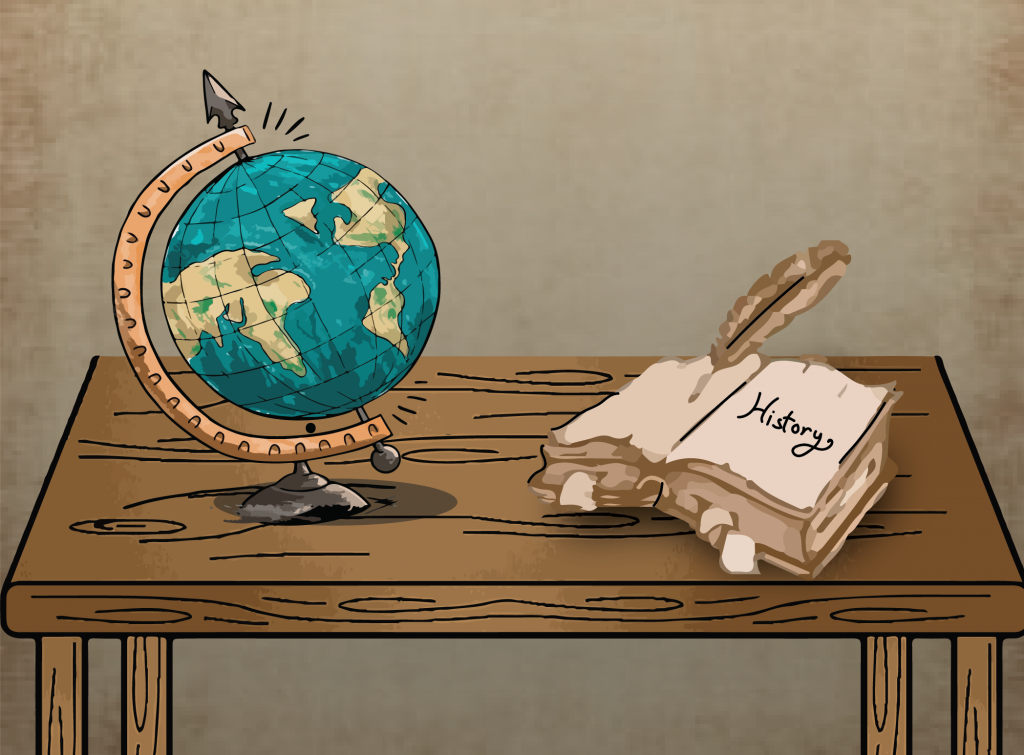Come next fall, students studying history at Binghamton University may find a new required course on their schedules.
A 200-level course titled “History Methods and Research Practices” was recently approved by the history department as a required course, after six years of deliberation. The course aims to provide history students with foundational skills, including research and evidence-based thinking to support them through upper-level coursework, and will be required for history majors and minors in fall 2022, pending Harpur College of Arts and Sciences approval.
The course is currently being offered as an elective. Arnab Dey, undergraduate director and associate professor of history who had advocated for the course being a requirement within the department, described the benefits of requiring such a course for students seeking to further pursue historical studies.
“[It] is intended as an introductory yet intensive foray into the mechanics, theories and practices of historical inquiry and writing,” Dey wrote in an email. “It will expose students to the nitty-gritty of conducting independent research, navigating our library holdings and databases, the idea of primary and secondary source analyses and, most importantly, show them how to detect, assemble and narrate evidence into cogent and persuasive historical arguments and writing.”
Kent Schull, chair of the history department, had first piloted the course in fall 2016 as a 300-level class. Schull said the presence of such a course was “critical,” and that it would introduce and train students in basics such as research, analysis and writing.
Schull and other history professors said they had taken a similar methods course as undergraduates and felt students would receive more support if such a course was required at BU.
“We weren’t having the outcomes in the student assessments that we were hoping to in our capstone classes,” Schull said. “It was like all of a sudden, these are seniors and these students are basically just learning how to do the research at that point in time. And I was going, ‘OK, we’ve missed something here.’”
Though first piloted at the 300 level, Schull, Dey and other professors said the course would serve better as a requirement for students just beginning their historical studies, and would even provide interdisciplinary benefits through the research skills it would imbue.
Leigh Ann Wheeler, a professor in history, said she felt the course would provide students with skills that would help them plan their academic future.
“As a result, students can decide whether this is a path they want to continue down, and if they do, they will be better prepared to conduct their own research and write history when they get to the capstone course,” Wheeler wrote in an email.
Part of the delay in implementing the course was because the history major required recertification with SUNY Central Administration before implementing a new degree requirement, according to Schull, a process which was completed last year. This was followed by a deliberative process within the history department, in which faculty and student representatives were able to express their concerns and feedback, which proponents of the course tried to address.
“This has given us, though, the opportunity to test this course out several times, discuss the results and then come up with what we feel is an excellent curriculum that will not only benefit history majors and minors, but anyone interested in learning how to do original research and develop their analytical and argumentative skills,” Schull said.
John Mancusi, a senior double-majoring in history and business administration, said that while different students may get varying degrees of benefit from such a course, its presence would benefit the major in whole.
“Having a class like this can help students get the fundamentals of research down before moving onto higher-level, advanced research courses,” Mancusi wrote. “It would definitely be a massive asset for students looking for a career in academia, teaching or other writing-intensive paths.”



